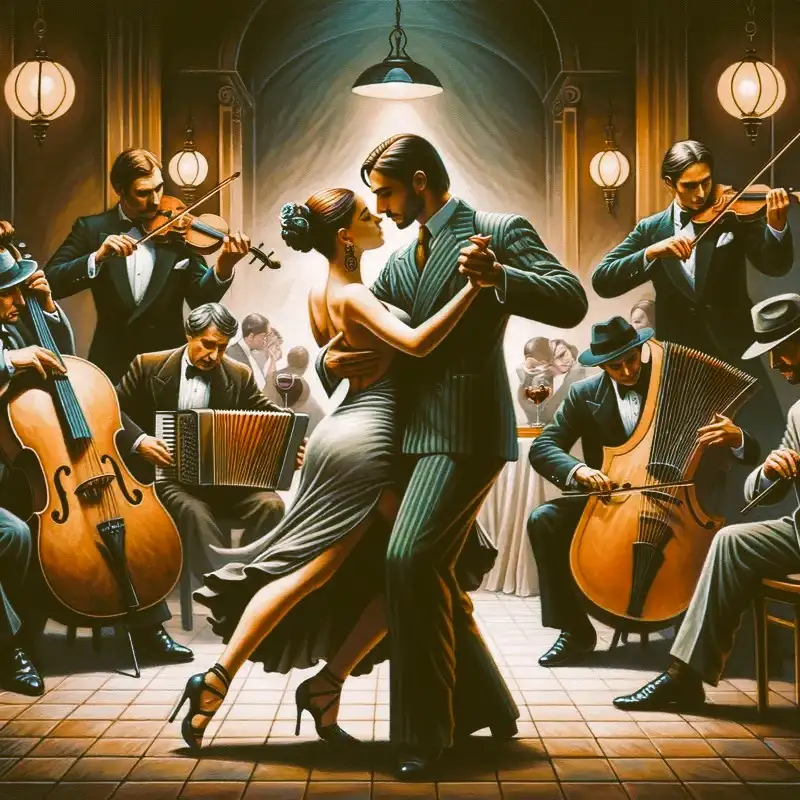Tango

Tango, a dance and music genre that encapsulates intense passion, drama, and sophistication, emerged from the vibrant culture of Argentina and Uruguay.
Table of Contents
Origins and Evolution
- Rioplatense Roots: Tango evolved in the late 19th century in the working-class neighborhoods of Buenos Aires, Argentina, and Montevideo, Uruguay. Initially considered a dance of the marginalized and the poor, it was heavily influenced by the diverse population of the region, including immigrants from Europe and Africa.
- European Influence: As tango gained popularity, it found its way to Paris in the early 20th century. Parisians, captivated by the dance and music, helped elevate its status, transforming it from a dance of the docks to a staple of elite ballrooms.
- Golden Age: Between the 1930s and 1950s, tango music experienced its “Golden Age.” During this period, orchestras led by maestros like Carlos Di Sarli, Juan D’Arienzo, and Osvaldo Pugliese created classic tunes that remain popular today.
- Nuevo Tango: In the latter half of the 20th century, musicians like Astor Piazzolla introduced Nuevo Tango, blending traditional tango with elements of jazz and classical music.
Key Instruments
- Bandoneón: A type of accordion, the bandoneón’s soulful sound is fundamental to tango.
- Violin: Adds depth and drama to tango compositions.
- Piano: Provides harmonic support and rhythmic patterns.
- Double bass: Offers a rhythmic foundation and tonal depth.
Styles & Variations
- Tango Canyengue: An older style of tango with a characteristic rhythmic pattern and a closer dance embrace.
- Tango Orillero: Originated in the suburbs, characterized by more playful movements and quicker tempo.
- Tango Salon: The most popular style danced in social settings today, emphasizing connection and improvisation.
- Milonga: A precursor to tango, it’s faster and more rhythmic, with a playful nature.
- Vals Criollo (Tango Vals): Incorporates the 3/4 time of the traditional waltz into tango’s movements and emotions.
Notable Figures
- Astor Piazzolla: A revolutionary figure, Piazzolla’s compositions redefined and expanded the horizons of tango music.
- Carlos Gardel: Known as the “voice of tango,” Gardel is an iconic singer whose contributions to tango music made him a legend.
- Aníbal Troilo: Renowned bandoneón player and bandleader, Troilo’s influence shaped tango during its golden age.